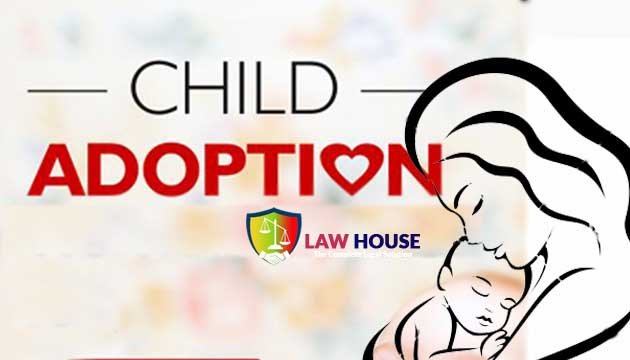CHILD ADOPTION STRATEGY/ HOW TO ADOPT A CHILD

Child adoption strategy, Adoption transfers parental rights from the biological or birth parents to the new adoptive parents.
Depending on the child you wish to adopt and the procedures you must follow in your state, adoption can be a difficult and drawn-out process.
Given the legal complications of adoption, speaking with a lawyer from the outset will help to ensure that everything runs as smoothly as possible.
Read More: Types of Lawyers: Roles and Practices
Contents
- 1 Is adoption your best course of action?
- 2 Child adoption strategy, Potential Parents for Adoption.
- 3 Child adoption strategy, Natural Parents.
- 4 Self-Assessment Questions for Those Who Want to Adopt.
- 5 Child adoption strategy, Adoption Methods.
- 6 Using an Agency for Adoption.
- 7 Individual adoption.
- 8 Adoption Identified.
- 9 Adoption both domestically and abroad
- 10 Child adoption strategy, Adoption Foster Care.
- 11 The Method of Adoption.
- 12 What to Ask an Adoption Lawyer.
Is adoption your best course of action?
A big life event is adopting a child. Biological parents who decide to place their kids for adoption face serious consequences.
Jason C. Brown, a Minnesota family law attorney, offers some things for prospective adoptive and biological parents to think about before starting the adoption process.

Child adoption strategy, Potential Parents for Adoption.
“If you’re the adopting parent,” he advises, “it’s crucial to assess whether you have the time and finances to care for a small child effectively. This goes for anyone who is thinking about becoming a parent.”
Brown offers some advice for various adoption scenarios:
International adoption.
“If a parent is going to be involved in an international adoption, they normally need to be prepared for worries about the conditions, such as family and diversity, or questions from the birth parents of the adopted kid about why the adoption is taking place,” continues Brown.
Child adoption strategy, Open adoption.
The question of whether the adoptive parents want a relationship with the biological parent arises in an open adoption. Some will respond, “Yes, totally,” while others will adopt a more independent stance,” the author claims.
Adoption by stepparents.
According to Brown, “the main concern with stepparent adoption is making sure there is an understanding of what it means to adopt a child — the rights and responsibility of parenthood — and making sure it’s done in a way that the adopted children are happy about. Because the stepparent has filled in for their original mother or father, children frequently already believe them to be their mom or dad.
Child adoption strategy, Natural Parents.
It’s a highly personal decision for a parent who is thinking about giving up a child, the speaker claims. However, questions concerning the legitimacy, openness, and identity of the adopters may arise.
Furthermore, The biological parent must fully comprehend what it means to have their parental rights revoked, according to experts.
A parent who decides to place a kid for adoption “should definitely have dialogues with trustworthy people in their life, whether relatives or friends,” according to Brown.
Self-Assessment Questions for Those Who Want to Adopt.
To begin the process, though, consider the following queries:
- What many of kids would you wish to adopt? Do you want to adopt a single child or a family of siblings?
- A younger or older child? Do you favor one over the other?
- Would you be interested in looking after a kid with special needs?
- Do you prefer domestic or foreign adoption?
- What services are offered for adoption in your state?
- How will you pay for the adoption’s expenses?
- Are there any adoption help or tax credits available in your state?
Child adoption strategy, Adoption Methods.
Depending on your situation and adoption objectives, you might want to have a look at a few different adoption kinds.
Between closed and open adoption, there are certain general differences:
Closed adoption.
There is no communication between the birth parents and the potential adoptive parents in a closed adoption.
Child adoption strategy, Public adoption.
During and during the adoption process, the birth family and adopted family interact frequently.
“I suppose it depends with the individuals themselves,” the author says of the advantages and disadvantages of closed versus open adoption. Having a relationship with the child’s biological parent over time is a benefit of open adoption, according to Brown.
“The negative effects this relationship might have on the child would be the con. What would the child think, for example, if they were placed for adoption or if their biological parent still has contact with them? he wonders.
“I’ve seen it play out both positively and negatively,” the speaker said.
Using an Agency for Adoption.
Those who are interested in adoption typically employ adoption agencies. Two types of adoption agency can be identified:
Agency for public adoption.
Public organizations provide care for and help find homes for children who are temporarily in the custody of the state, such as those who are orphaned, abandoned, or the victims of child abuse. In order to place children, public organizations frequently collaborate with state social services or departments of children and families.
Child adoption strategy, Agencies for private adoption.
Children whose biological parents desire adoption are placed through private agencies, which are frequently run by charitable or religious nonprofit organizations.
Public agencies are managed directly by the state, as opposed to commercial companies, which are licensed by the state to assist with the care and placement of children into loving families.
Individual adoption.
People who desire to adopt can speak with the birth mother directly.
Private adoptions do not include an agency, but to guarantee a successful adoption, lawyers or other professionals usually serve as a mediator between the parents.
Adoption Identified.
In most cases, prospective adoptive parents locate and get in touch with a birth mother who wishes to place her child for adoption.
Following their meeting with the birth parents, Anyhow, the prospective parents make contact with an adoption agency to begin the adoption process.
Adoption both domestically and abroad
Child adoption strategy, Domestic adoption frequently requires moving children from one state to another even if it takes occurred wholly within the United States.
An adoptive family in Oregon, for instance, would seek to place an Idaho child in their home. The Interstate Compact on the Placement of Children guarantees the welfare and security of children during interstate adoption processes.
Given that it incorporates several different sources of law, international adoption is in many ways the most complicated kind of adoption:
- The Immigration and Nationality Act (INA), which governs passports and visas, is one example of U.S. law.
- International agreements, such as the Hague Adoption Convention, foreign legislation of the nation from which prospective parents wish to adopt
- It’s a good idea to speak with an adoption attorney if you’re thinking about adopting a child from another country to make sure all the legal requirements are satisfied.
Child adoption strategy, Adoption Foster Care.
Many people who are considering adoption will initially take on the role of foster parents. This enables individuals or couples to gain experience taking care of kids of various ages and determine whether adoption is the best choice for them. In many places, foster care training is also necessary and helpful for those who eventually desire to adopt.
According to Brown, “the foster connection frequently evolves from being more than just a stand-in in a time of crisis to becoming quite similar to a parent-child bond.”
He adds that it’s crucial for foster parents to recognize that biological parents also have interests—ones that are actually more important than their own.
The county or state must, in most cases, cooperate with biological parents in order to create a plan that will improve the circumstances that led to the child being placed in foster care.
According to Brown, parental rights cannot be revoked involuntarily unless the biological parents have been given this chance and failed to take advantage of it.
When a parent realizes they can’t give a child an acceptable home, there may be “other instances where the parent will agree that adoption should take place,” according to Brown.
The Method of Adoption.
Finding a child who is available for adoption is just the first step in a lengthy adoption procedure that ends with a court hearing. The adoption procedure will often involve:
Choose the adoption strategy you want to use.
Consider the aforementioned queries when you assess your circumstance. Speak to adoption experts or get in touch with parent support organizations to learn more about adoption.
Submit a petition for adoption to the regional adoption court.
Child adoption strategy, The petition to the court argues in favor of your desire to adopt. However, It will also include information about you personally and cite reasons why adoption is in the best interests of the child you want to adopt.
Send a notice.
The adoption hearing must be announced to all parties involved, including the child’s biological parents (if they are a certain age, typically 12 or 14). Also, To complete the adoption, the birth parents must agree to have their parental rights terminated.
Complete a home study for adoption.
Child adoption strategy, The home study is a thorough examination of the potential parents’ suitability and readiness for parenthood. The adoption court uses the home study report to determine if adoption is in the best interests of the child.
Attend the adoption hearing in court.
The hearing will complete the adoption placement and transfer parental rights to the new adoptive parents.
Furthermore, Read this article to find out more about the adoption legal procedure. To acquire thorough information and advice on your particular situation. It’s a good idea to speak with an experienced adoption attorney in your region.
What to Ask an Adoption Lawyer.
Child adoption strategy, Fortunately, lots of adoption lawyers offer no-cost consultations. During these discussions, you may decide whether the lawyer is a good. Fit for your needs and the lawyer can learn more about your case. A few examples include:
- Are the legal fees for you?
- Which payment options do you offer?
What types of legal services do you offer?
What kinds of adoption-related circumstances have you handled? - How long might it take for the adoption to be finalized?
To find a lawyer based on your legal situation or location. Go to the Super Lawyers directory and use the search box.






2 Comments